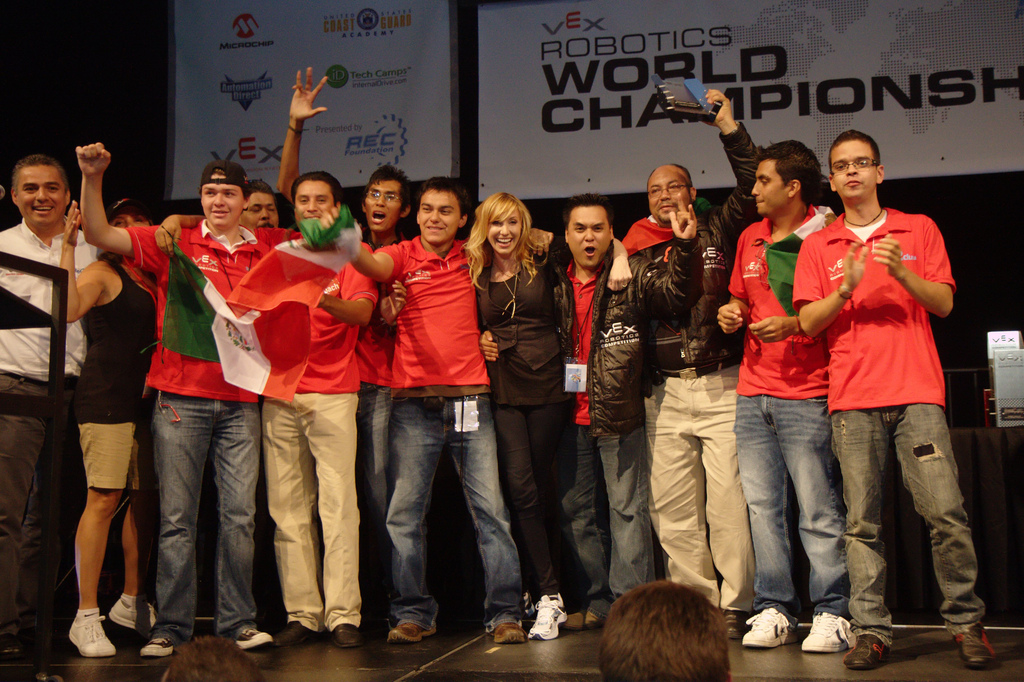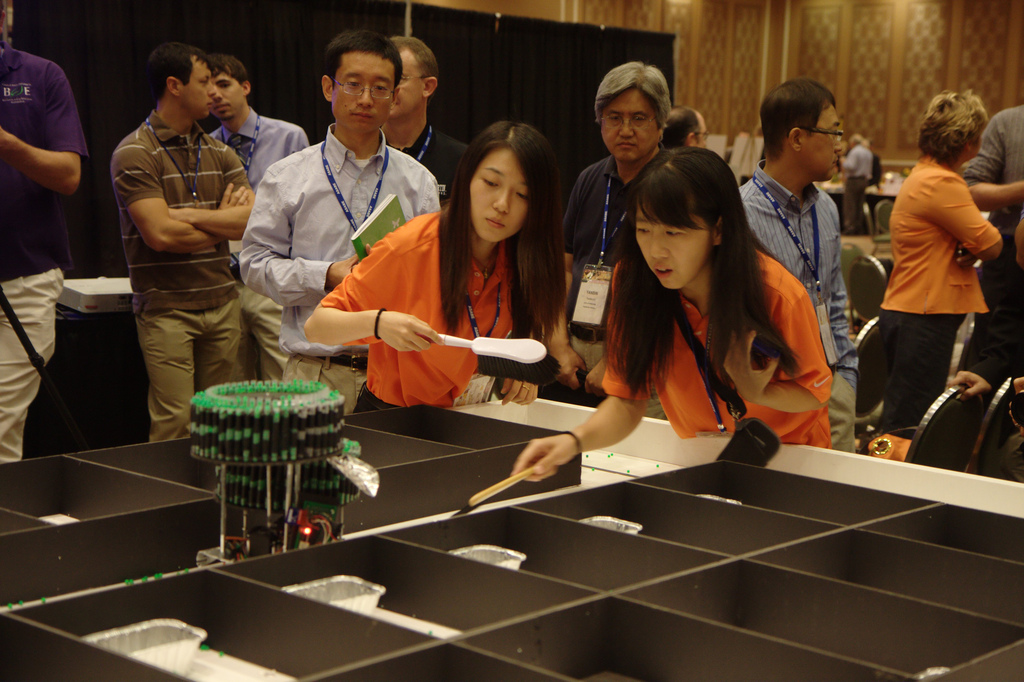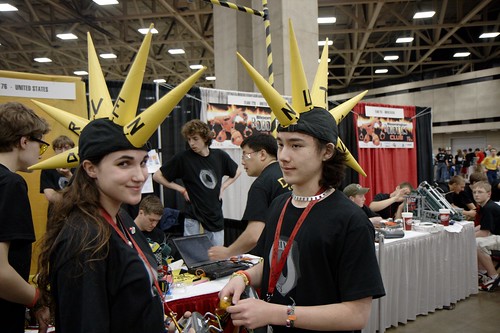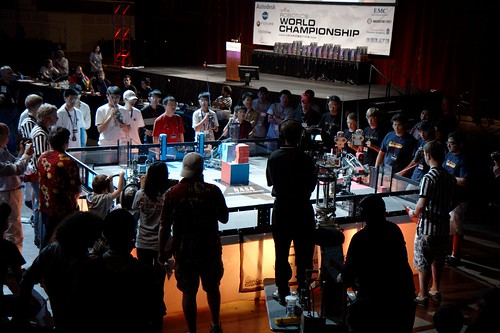
Kari Byron congratulates a winning team
I was invited out to Orlando, FL to photograph the 2011 VEX Robotics World Championship last week. It was bigger and busier than ever this year. There were lots of things going on besides just VEX matches this year including BEST, Boy Scout, and Coast Guard robot events. It’s also turning into a good networking event. I ran into old friends, met friends I’d previously known only online, and even made some new friends. If you want to go straight to the photos (600+), head over to my
Flickr 2011 VEX Robotics World Championship gallery.
Every year, the VEX Robotics World Championship gets bigger. This year it topped 500 teams, and more than 10,000 total participants, from around the world. For 2011, the event moved to the Walt Disney World’s ESPN Wide World of Sports complex near Orlando, FL from its previous location in Dallas, TX. The smaller venue resulted in the VEX event being spread out across multiple buildings as well a large temporary structure. Vendors were scattered around in small tents outdoors and some events were held on the baseball field. The downside to this was a lot more walking and decreased probability of seeing the random cool things that teams spontaneously do like parading around, playing instruments and dancing. But the upside (at least for the younger crowd) was the proximity to all the Disney theme parks.
I only saw one alligator during my four days in Florida but every evening as I walked back to my hotel room, I saw dozens of green anoles scurrying out my way. They were apparently attracted to the warm sidewalks after sunset.
This year’s VEX challenge was called Round Up and involved the usual tasks of moving red or blue objects around on a square field. You can check out the Round Up challenge description if you’re curious about the details. As always, the teams of all age groups came up with ingenious robot designs to tackle the problem. There were a lot more university teams this year than last year in addition to the many High School and Middle School teams. There were also more all girl teams again this year. If VEX is any indication, expect to see more female engineers in the future.
In addition to their own matches, VEX hosted other events including the BEST championship and the US Coast Guard Academy’s AROW water robotics competition. The Boy Scouts of America also showed up with lots of scouts, robots, and scouting officials so we could watch the first scouts ever finish the requirements for the recently announced robotics merit badge. There were other distractions including a DJ, random Disney characters, live music, dancing, and occasional pyrotechnics.
The BEST teams continue to be the most enthusiastic robot builders I’ve seen. Anytime someone mentions the B-word, the response from all the BEST teams is deafening, even though I’m pretty sure all that noise is coming from a much smaller number of people than the VEX group. Somebody needs to figure out what BEST is doing in the cheer training department – it’s definitely working.
Artist Kari Byron of MythBusters and Head Rush hosted the event. Last year, MythBuster’s Grant Imahara hosted but I think Kari may have him beat on popularity with the kids. What better role model for aspiring female engineers than Kari? And teenage boys seem to really like her too for some reason. In addition to her duties as MC, Kari put in endless hours posing for millions of photos with robot builders (and robots) as well as signing autographs.
VEX Competitions have many awards, lots of complicated “alliances” between multiple teams, and several different divisions, so I won’t even attempt to tell you who won what. If you’re curious about that sort of thing check out the 2011 VEX Robotics World Championship Awards & Results list. You can read the official VEX news release or check out the more detailed press kit with photos and video.
And, of course, I shot photos while I was there. Lots and lots of photos. More photos than you could possible want to look at. You’ll find them over in my 2011 VEX World Championship photo gallery (Update: by popular demand, here’s a link to just the Kari Byron photos).








